Joon-Young Yang
Relational Proxy Loss for Audio-Text based Keyword Spotting
Jun 08, 2024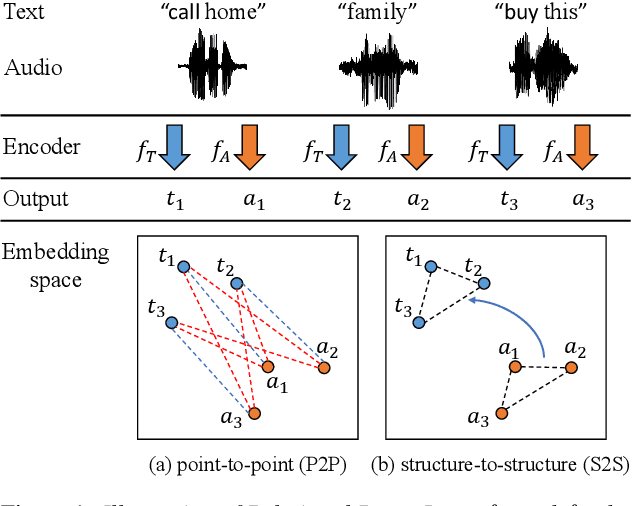
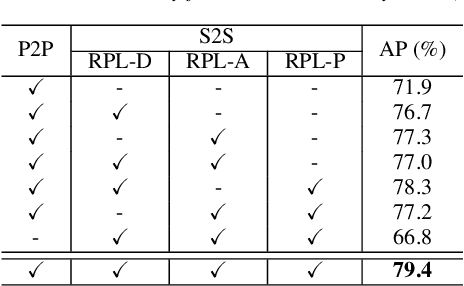


Abstract:In recent years, there has been an increasing focus on user convenience, leading to increased interest in text-based keyword enrollment systems for keyword spotting (KWS). Since the system utilizes text input during the enrollment phase and audio input during actual usage, we call this task audio-text based KWS. To enable this task, both acoustic and text encoders are typically trained using deep metric learning loss functions, such as triplet- and proxy-based losses. This study aims to improve existing methods by leveraging the structural relations within acoustic embeddings and within text embeddings. Unlike previous studies that only compare acoustic and text embeddings on a point-to-point basis, our approach focuses on the relational structures within the embedding space by introducing the concept of Relational Proxy Loss (RPL). By incorporating RPL, we demonstrated improved performance on the Wall Street Journal (WSJ) corpus.
Improving Transformer-based End-to-End Speaker Diarization by Assigning Auxiliary Losses to Attention Heads
Mar 02, 2023Abstract:Transformer-based end-to-end neural speaker diarization (EEND) models utilize the multi-head self-attention (SA) mechanism to enable accurate speaker label prediction in overlapped speech regions. In this study, to enhance the training effectiveness of SA-EEND models, we propose the use of auxiliary losses for the SA heads of the transformer layers. Specifically, we assume that the attention weight matrices of an SA layer are redundant if their patterns are similar to those of the identity matrix. We then explicitly constrain such matrices to exhibit specific speaker activity patterns relevant to voice activity detection or overlapped speech detection tasks. Consequently, we expect the proposed auxiliary losses to guide the transformer layers to exhibit more diverse patterns in the attention weights, thereby reducing the assumed redundancies in the SA heads. The effectiveness of the proposed method is demonstrated using the simulated and CALLHOME datasets for two-speaker diarization tasks, reducing the diarization error rate of the conventional SA-EEND model by 32.58% and 17.11%, respectively.
Task-specific Optimization of Virtual Channel Linear Prediction-based Speech Dereverberation Front-End for Far-Field Speaker Verification
Dec 27, 2021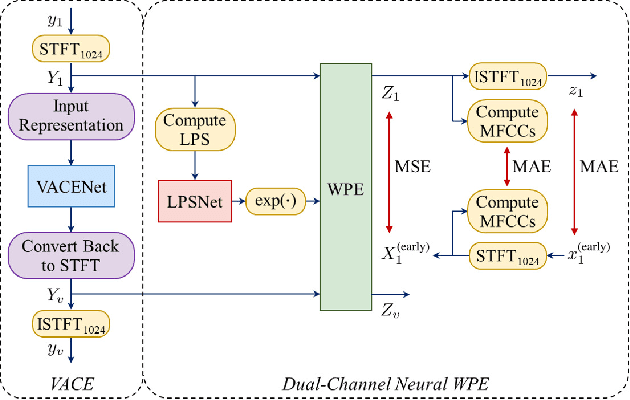
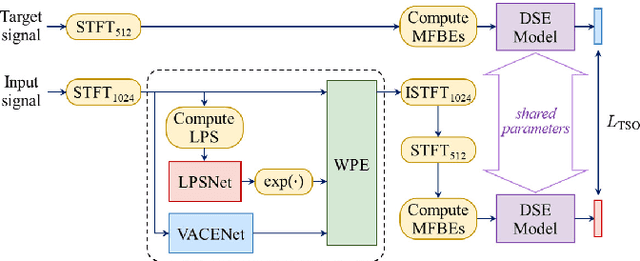
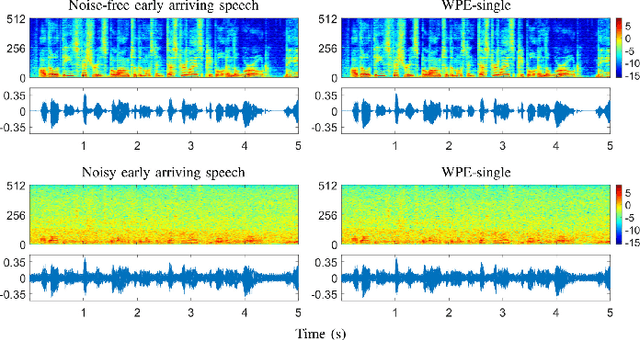
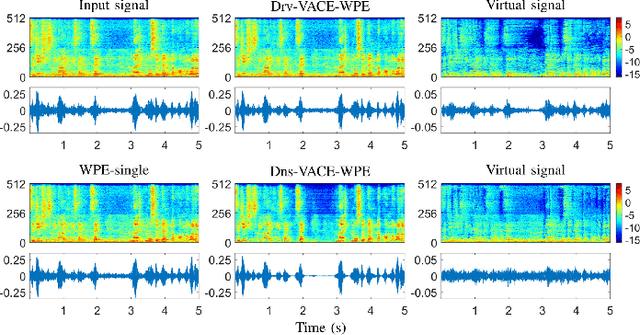
Abstract:Developing a single-microphone speech denoising or dereverberation front-end for robust automatic speaker verification (ASV) in noisy far-field speaking scenarios is challenging. To address this problem, we present a novel front-end design that involves a recently proposed extension of the weighted prediction error (WPE) speech dereverberation algorithm, the virtual acoustic channel expansion (VACE)-WPE. It is demonstrated experimentally in this study that unlike the conventional WPE algorithm, the VACE-WPE can be explicitly trained to cancel out both late reverberation and background noise. To build the front-end, the VACE-WPE is first independently (pre)trained to produce "noisy" dereverberated signals. Subsequently, given a pretrained speaker embedding model, the VACE-WPE is additionally fine-tuned within a task-specific optimization (TSO) framework, causing the speaker embedding extracted from the processed signal to be similar to that extracted from the "noise-free" target signal. Moreover, to extend the application of the proposed front-end to more general, unconstrained "in-the-wild" ASV scenarios beyond controlled far-field conditions, we propose a distortion regularization method for the VACE-WPE within the TSO framework. The effectiveness of the proposed approach is verified on both far-field and in-the-wild ASV benchmarks, demonstrating its superiority over fully neural front-ends and other TSO methods in various cases.
VACE-WPE: Virtual Acoustic Channel Expansion Based On Neural Networks for Weighted Prediction Error-Based Speech Dereverberation
Feb 10, 2021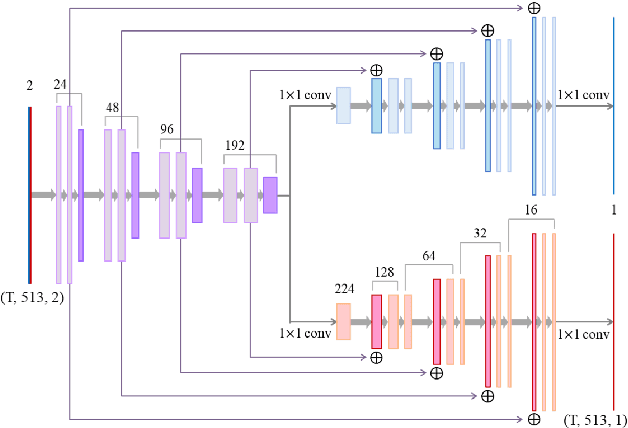

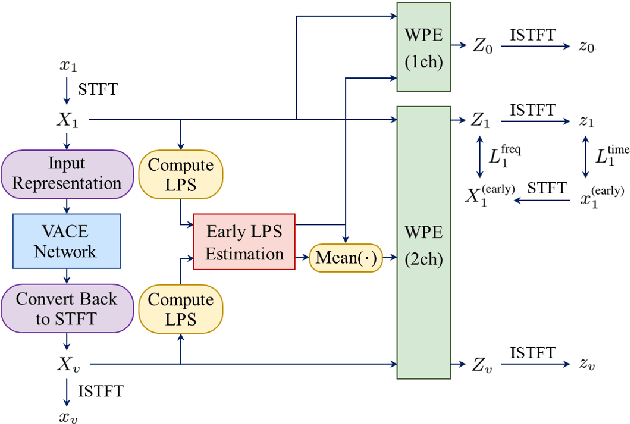
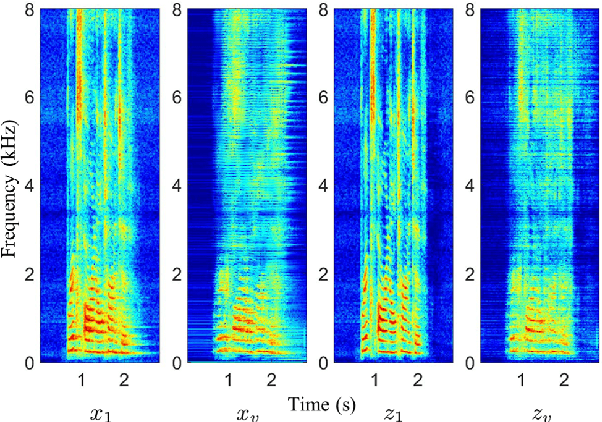
Abstract:Speech dereverberation is an important issue for many real-world speech processing applications. Among the techniques developed, the weighted prediction error (WPE) algorithm has been widely adopted and advanced over the last decade, which blindly cancels out the late reverberation component from the reverberant mixture of microphone signals. In this study, we extend the neural-network-based virtual acoustic channel expansion (VACE) framework for the WPE-based speech dereverberation, a variant of the WPE that we recently proposed to enable the use of dual-channel WPE algorithm in a single-microphone speech dereverberation scenario. Based on the previous study, some ablation studies are conducted regarding the constituents of the VACE-WPE in an offline processing scenario. These studies help understand the dynamics of the system, thereby simplifying the architecture and leading to the introduction of new strategies for training the neural network for the VACE. Experimental results in noisy reverberant environments reveal that VACE-WPE considerably outperforms its single-channel counterpart in terms of objective speech quality and is complementary to the single-channel WPE when employed as the front-end for the far-field automatic speech recognizer.
 Add to Chrome
Add to Chrome Add to Firefox
Add to Firefox Add to Edge
Add to Edge